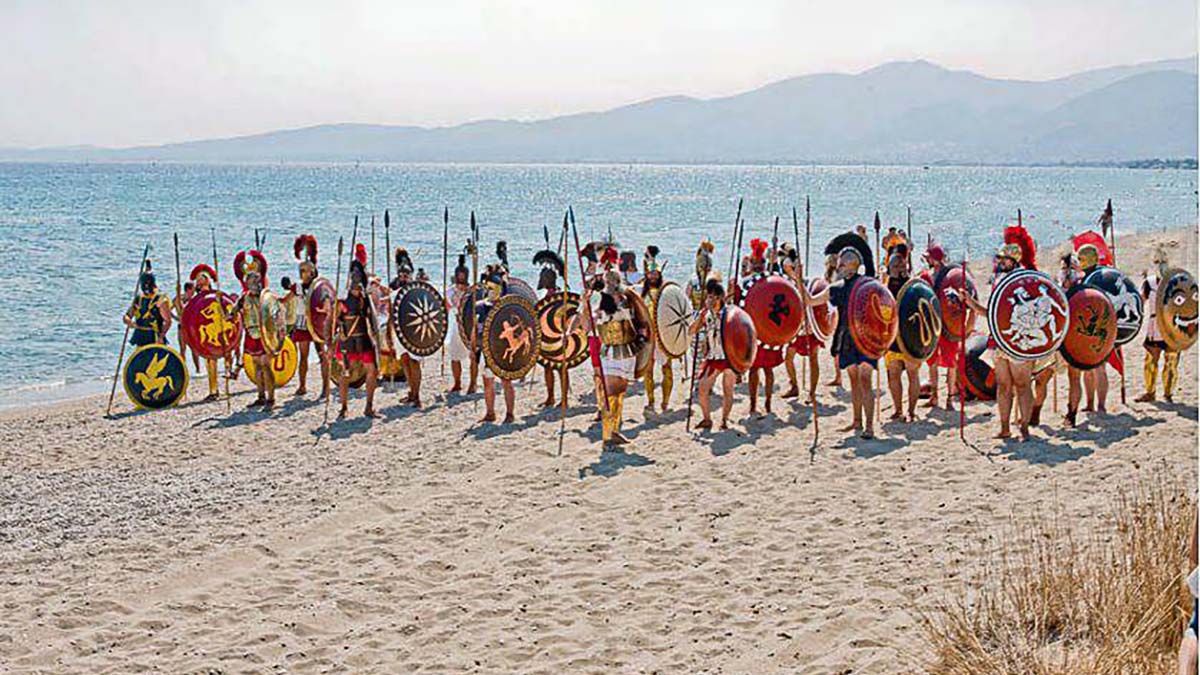
by W. Ruth Kozak
I stand on the deserted beach of Marathon, Greece, a long crescent of stones and sand. Surf spills over the pebbles, spray bursts like a shower of gold-dust reflecting the dazzling Greek sun. On this beach, with the surf hissing over pebbles red as blood and white as bone, I hear the wind moaning like the voices of the ancient dead, as though the spirits still linger in the shade of the pine groves. Here, in the stillness of the autumn afternoon, I remember the story of the young men of ancient Attica.
It is 490 BC. The Persian fleet is anchored offshore. Hopelessly outnumbered, the 9,000 Athenian and 1,000 Plataeans face the formidable army of 25,000 Persians. According to the legend, as the invasion begins, the shepherd god, Pan, miraculously intervenes. Black clouds obscure the sun as the Athenians launch their attack causing the Persians to “panic”, from which the term is derived. Confused by the commotion and the swift retaliation of the Attic warriors, the Persians hastily retreat and are defeated. This is Greece’s first battle for democracy. The second was to follow in 480 BC when the Persian fleet was defeated at Salamis, one of the most significant battles in history.
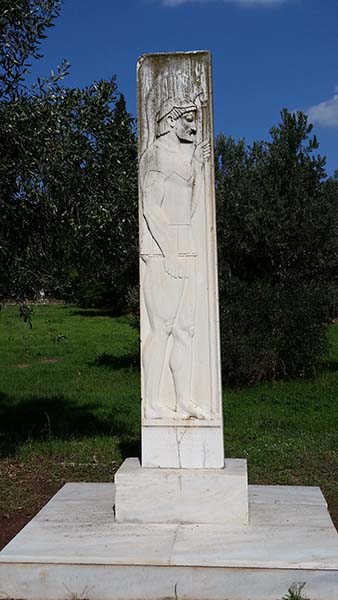 A short walk from the beach, in a pastoral setting surrounded by a grove of trees, 190 young men of Attica are buried where they fell, heaped in a common grave mound, guarded by a marble relief of the Warrior of Marathon. The tumulus is located five kms from Marathon village. The high mound is blanketed with a carpet of grass, surrounded by what was once the battlefield that covered the swampy ground between the beach and Mt. Pentilikon. Several miles inland there is an archaeological museum devoted to artifacts found in the area. Nearby is the grave mound of the eleven Plataeans who died in the battle, including that of a ten year old boy, the youngest fatality of that fateful day
A short walk from the beach, in a pastoral setting surrounded by a grove of trees, 190 young men of Attica are buried where they fell, heaped in a common grave mound, guarded by a marble relief of the Warrior of Marathon. The tumulus is located five kms from Marathon village. The high mound is blanketed with a carpet of grass, surrounded by what was once the battlefield that covered the swampy ground between the beach and Mt. Pentilikon. Several miles inland there is an archaeological museum devoted to artifacts found in the area. Nearby is the grave mound of the eleven Plataeans who died in the battle, including that of a ten year old boy, the youngest fatality of that fateful day
I first visited Marathon, Greece back in 1984. The tomb was covered with a blanket of red poppies. I climbed to the top of it. Now there is a winding path surrounding it where visitors can stroll under the shade of the trees. A sign says: ‘No climbing allowed!’
The name “Marathon” comes from the herb fennel. It is believed that the town was named this because of the abundance of fennel plants in the area. The name of the long-distance endurance race comes from the legend of Pheidippides, a young Greek soldier and runner who was sent from the battle-field to Athens to announce the Greek’s victory.
 Shortly before the battle took place, the Athenians knowing they were vastly outnumbered, had sent Pheidippides, a soldier and experienced runner, to Sparta to ask for help. The 140 mile course from Athens to Sparta was rugged and mountainous. Pheidippides ran the course in only 36 hours, but the Spartans agreed to help only once the moon was full, due to religious laws. So Pheidippides ran back to Athens to deliver the disappointing news and immediately afterwards join the small Athenian army to march to the plains of Marathon.
Shortly before the battle took place, the Athenians knowing they were vastly outnumbered, had sent Pheidippides, a soldier and experienced runner, to Sparta to ask for help. The 140 mile course from Athens to Sparta was rugged and mountainous. Pheidippides ran the course in only 36 hours, but the Spartans agreed to help only once the moon was full, due to religious laws. So Pheidippides ran back to Athens to deliver the disappointing news and immediately afterwards join the small Athenian army to march to the plains of Marathon.
By the end of that day the Persians were defeated. Pheidippides was again summoned to run the 26 miles back to Athens to deliver news of the victory. In spite of fatigue after his recent run to Sparta and having fought all morning in heavy armour, the brave young soldier took the challenge. Pushing himself beyond the limits of human endurance, he ran back to Athens to deliver the message. After shouting “Nike!” (“Victory!”) he collapsed and died of exhaustion. In his honour, to this day the Athenian “marathon” begins from the ancient battle site.
The starting point of the Athens marathon is up a long, tree-lined road, clearly marked. The new “Preservation of the Marathon” museum is located here and across the road is the Olympic stadium entrance with the starting gate for all marathons run in Greece. The new museum is mainly a record in photos and writing of all the marathons since the first modern Olympics in 1896 when a Greek shepherd, Louis Spiridon, who was known for his powers of endurance, won his first marathon. In a show of indescribable enthusiasm, 60,000 spectators and the King of Greece welcomed him in the Panathenaic Stadium as if he was the new Pheidippides.
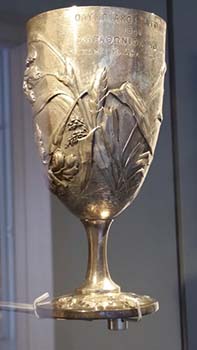 There is a gallery of women runners too. The first woman to run a marathon was from Syros. She was known as “Melpomene” and she ran 40 kilometres of the 1896 marathon the day after it was officially run. She had been denied permission to run in the official race so she decided to run alone. She asked a priest to pray for her protection but he refused, saying he would only bless official athletes. Her finishing time was 5.30 hrs. Today hundreds of women participate in marathons which are held not only in Greece but world-wide.
There is a gallery of women runners too. The first woman to run a marathon was from Syros. She was known as “Melpomene” and she ran 40 kilometres of the 1896 marathon the day after it was officially run. She had been denied permission to run in the official race so she decided to run alone. She asked a priest to pray for her protection but he refused, saying he would only bless official athletes. Her finishing time was 5.30 hrs. Today hundreds of women participate in marathons which are held not only in Greece but world-wide.
The first modern Olympic Games in 1896 introduced the marathon race of 40,000 meters (24.85 miles) Later the distance was changed to 26.2 miles. To this day the Athens marathon follows the approximate route that Pheidippides ran from Marathon to Athens finishing at the Panathanaic Olympic Stadium. The first twelve kilometres are flat. The next nineteen kilometres are more demanding, some of it uphill. Then there is a final eleven kilometres downhill towards the finish line. The Athens Marathon is held every year in November.
Back at the grove, as I stand below the grave mound, I think of the young warriors of Attica and admire their bravery. I hear the voices of the dead, as though their spirits still linger in the shadows. The ghosts of Marathon are here, their victory paean rising from the sea and carried by the wind through the pine trees just as it did centuries ago.
If You Go:
Marathon is 42 kilometers north of Athens, an hour’s bus trip. Buses leave hourly from Station 29, Mavromateon St near the National Archaeological Museum in Athens. Check bus info for the locations such as Tymvos (the tomb) which is 5 kms from Marathon village and other sites in the Marathon area.
About the author:
Ruth is a travel journalist and historical fiction writer who spends much of her time in Greece where she has lived full and part-time. Ruth’s two volume historical novel SHADOW OF THE LION is available on Amazon.com and the Book Depository. Volume One: BLOOD ON THE MOON and Volume Two SHADOW OF THE LION: THE FIELDS OF HADES tell the story of the fall of Alexander the Great’s dynasty. In Alexander’s Footsteps.
Photo Credits:
Re-creation of Battle of Marathon by Phokion / CC BY-SA
All other photos by W. Ruth Kozak



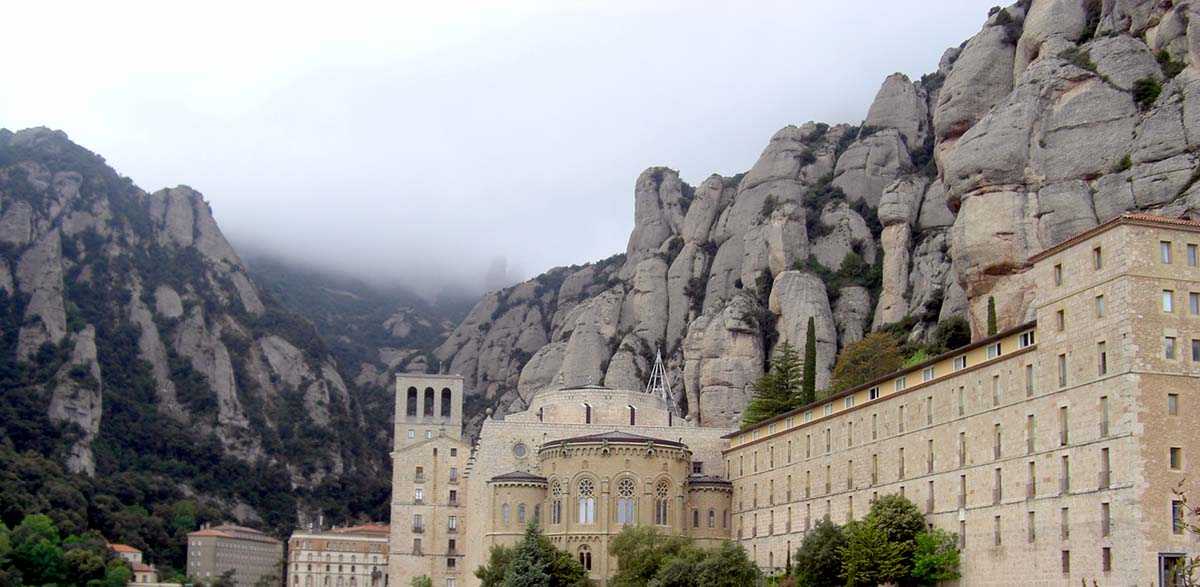


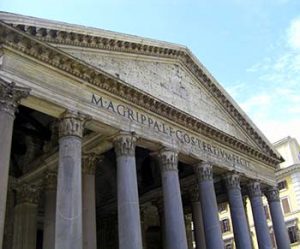

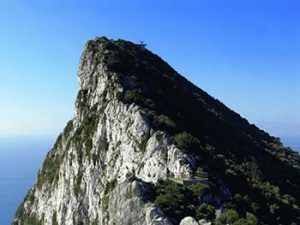
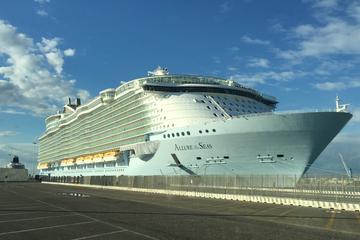
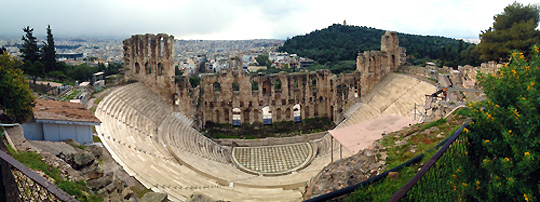
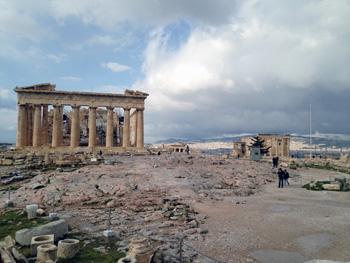 At this point, I wasn’t worried about the other passengers’ thoughts. Dignity, respect, pretending not to be a tourist – all out the window having tried very unsuccessfully to validate my 5 Euro ticket for a solid ten minutes of the bus ride. I could stare and gawp all I wanted; and so I did, drinking in that immense sight. I had read the myths since I was a kid, studied the history in school, and poured over the art for project after project in undergrad. Thrill raced through me faster than the cold had, as I discovered for the first time something I thought I already knew. Here it all was in 3D.
At this point, I wasn’t worried about the other passengers’ thoughts. Dignity, respect, pretending not to be a tourist – all out the window having tried very unsuccessfully to validate my 5 Euro ticket for a solid ten minutes of the bus ride. I could stare and gawp all I wanted; and so I did, drinking in that immense sight. I had read the myths since I was a kid, studied the history in school, and poured over the art for project after project in undergrad. Thrill raced through me faster than the cold had, as I discovered for the first time something I thought I already knew. Here it all was in 3D.
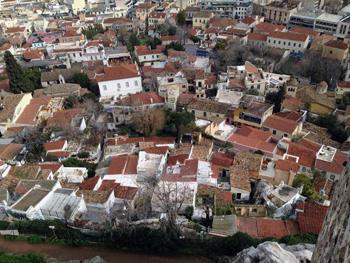 Thankfully, what he actually meant was that he couldn’t get me to the front door along the one-way pedestrian street. But he could get me close and, after a nice little chat about whether it was more expensive to live in the UK, he did. In hindsight, it was quite beneficial to have a little tour of the city. But on a pitch black evening in February, hindsight wasn’t on my mind. What I was actually thinking about was snow – snow in the Mediterranean. For the first time in five years, it was forecast to snow in Athens and as we drove, big white flakes melted on the windscreen. Not enough to stick in town, but there was plenty to pile up in the higher altitudes. From the Acropolis and the top of Lycabettus Hill, I spun circles the next day, looking round at the mountains that ringed the basin where the city lived. The big, slow flakes from last night had left them white-capped under cracks of blue sky between stacked layers of grey and white cloud. The sun, when it did decide to join the day, was cold and sharp and my ears froze. I had forgotten to pack a hat.
Thankfully, what he actually meant was that he couldn’t get me to the front door along the one-way pedestrian street. But he could get me close and, after a nice little chat about whether it was more expensive to live in the UK, he did. In hindsight, it was quite beneficial to have a little tour of the city. But on a pitch black evening in February, hindsight wasn’t on my mind. What I was actually thinking about was snow – snow in the Mediterranean. For the first time in five years, it was forecast to snow in Athens and as we drove, big white flakes melted on the windscreen. Not enough to stick in town, but there was plenty to pile up in the higher altitudes. From the Acropolis and the top of Lycabettus Hill, I spun circles the next day, looking round at the mountains that ringed the basin where the city lived. The big, slow flakes from last night had left them white-capped under cracks of blue sky between stacked layers of grey and white cloud. The sun, when it did decide to join the day, was cold and sharp and my ears froze. I had forgotten to pack a hat.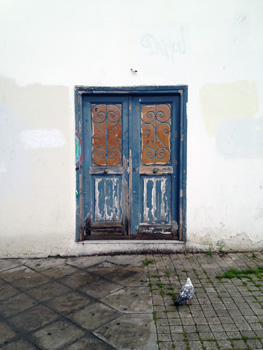 I found the lower gardens on the hill around the Acropolis full of temples and remains of buildings, statues, column capitals, and broken bits of foundations. The museums and Acropolis grounds felt more like walking into the pictures from the books I had read, studied, photocopied, and researched for the past six years. With an almost reverence, my eyes traced the draping folds of the stone garments that were so much softer and more alive than the drawings and photographs had shown me. Poseidon and Athena had to come to life and watched me carefully as I revelled in the neatly arranged Corinthian column caps I had modelled my own exhibition project on.
I found the lower gardens on the hill around the Acropolis full of temples and remains of buildings, statues, column capitals, and broken bits of foundations. The museums and Acropolis grounds felt more like walking into the pictures from the books I had read, studied, photocopied, and researched for the past six years. With an almost reverence, my eyes traced the draping folds of the stone garments that were so much softer and more alive than the drawings and photographs had shown me. Poseidon and Athena had to come to life and watched me carefully as I revelled in the neatly arranged Corinthian column caps I had modelled my own exhibition project on.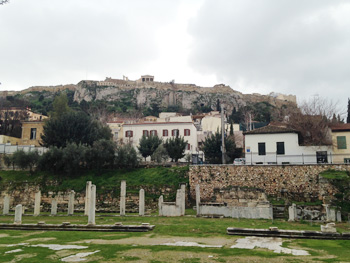 After that, I walked and walked and walked the streets, looking for more awe-inspiring moments whatever the weather. Psirri turned out to be a fascinating district. I had booked myself into a lovely little hostel called City Circus for the week, where thankfully everything was warm and cozy with bountiful breakfast and friendly staff. Around the corner was a little spiders’ web of streets and five-point star intersections filled with shops and food. There were bars and music and fried filo dough and cheese concoctions in any shape I fancied. Lamp light and candle light poured through colored glass in the windows to join the colorful plaster walls. The music burst from inside the restaurants and the stones smacked hard under my new shoes. I didn’t want to stay long. I just wanted to see all of it, drink in this new, vivacious, loud place that breathed under my feet.
After that, I walked and walked and walked the streets, looking for more awe-inspiring moments whatever the weather. Psirri turned out to be a fascinating district. I had booked myself into a lovely little hostel called City Circus for the week, where thankfully everything was warm and cozy with bountiful breakfast and friendly staff. Around the corner was a little spiders’ web of streets and five-point star intersections filled with shops and food. There were bars and music and fried filo dough and cheese concoctions in any shape I fancied. Lamp light and candle light poured through colored glass in the windows to join the colorful plaster walls. The music burst from inside the restaurants and the stones smacked hard under my new shoes. I didn’t want to stay long. I just wanted to see all of it, drink in this new, vivacious, loud place that breathed under my feet.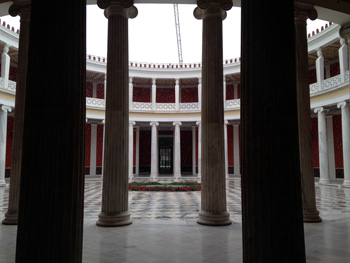 Athens’ graffiti was most unexpected. It was everywhere, unabashedly adorning abandoned houses, old government buildings, and ramshackle metal fences. My walk into town was a burst of color, screaming ideas at me that I could not understand. But still I knew they were trying to say something, trying to be heard amidst the throng of twelve-story concrete apartment complexes and canvas canopies. After a brisk souvenir search through the bustling side streets around Monastirkai Square, I grabbed a latte in a fourth-story coffee bar. It had huge windows looking out over the red tile roofs, all uneven height and helter-skelter pitch before stopping abruptly for the Hill to rise behind them. Buzzing with voices, the room was warm and curls of smoke caressed the windows. Out of the the top of the hill, the Acropolis rose overlooking the city, ever listening as the centuries marched past under its watchful gaze. How many stories had it seen unfold? What tales could it tell if only I could ask – what stories not found in any of my books? I would never know. My own stories would have to be enough for my curiosity.
Athens’ graffiti was most unexpected. It was everywhere, unabashedly adorning abandoned houses, old government buildings, and ramshackle metal fences. My walk into town was a burst of color, screaming ideas at me that I could not understand. But still I knew they were trying to say something, trying to be heard amidst the throng of twelve-story concrete apartment complexes and canvas canopies. After a brisk souvenir search through the bustling side streets around Monastirkai Square, I grabbed a latte in a fourth-story coffee bar. It had huge windows looking out over the red tile roofs, all uneven height and helter-skelter pitch before stopping abruptly for the Hill to rise behind them. Buzzing with voices, the room was warm and curls of smoke caressed the windows. Out of the the top of the hill, the Acropolis rose overlooking the city, ever listening as the centuries marched past under its watchful gaze. How many stories had it seen unfold? What tales could it tell if only I could ask – what stories not found in any of my books? I would never know. My own stories would have to be enough for my curiosity.
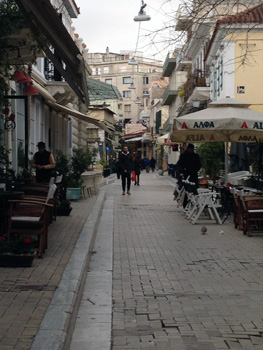 On the way back, we scootered through a seaside town and grabbed coffee. After the hustle of the city and the very present feeling of history at Aphaia, it was odd how quiet the coasts were. Big, abandoned holiday homes half-built lingered just off the shore, silent concrete skeletons that didn’t tell stories like the ancient ruins. I thought it was only the island, but as I sat in a restaurant on Athen’s shore, I was as the sole customer. It was full of chairs placed upside down on tables – a hundred inside and maybe more than a hundred outside. The place felt expectant but mournful, waiting for the summer visitors to come and fill it with vibrance. As I stared silently down the coast, I felt out of place for the first time on my trip. In walking in the footsteps of the ancient past, I had created my own stories. But each story I created was filled with the stories that had come before me. In walking the recently built-up coastline, I felt disconnected from the past, though it surely had no shortage of stories to tell. Perhaps I’m far too picky about architecture.
On the way back, we scootered through a seaside town and grabbed coffee. After the hustle of the city and the very present feeling of history at Aphaia, it was odd how quiet the coasts were. Big, abandoned holiday homes half-built lingered just off the shore, silent concrete skeletons that didn’t tell stories like the ancient ruins. I thought it was only the island, but as I sat in a restaurant on Athen’s shore, I was as the sole customer. It was full of chairs placed upside down on tables – a hundred inside and maybe more than a hundred outside. The place felt expectant but mournful, waiting for the summer visitors to come and fill it with vibrance. As I stared silently down the coast, I felt out of place for the first time on my trip. In walking in the footsteps of the ancient past, I had created my own stories. But each story I created was filled with the stories that had come before me. In walking the recently built-up coastline, I felt disconnected from the past, though it surely had no shortage of stories to tell. Perhaps I’m far too picky about architecture.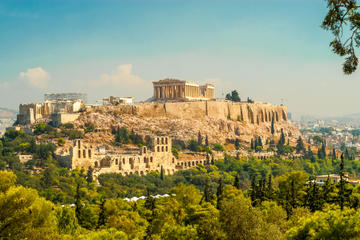
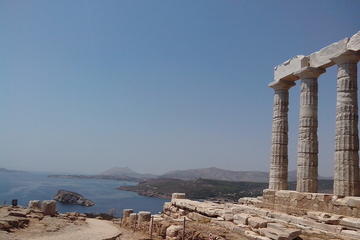

 We are celebrating the conclusion of a Rebetiko Music Festival on the island and are among the grateful throngs standing retsina-less at the side. Grateful that the sell-out concert is able to accommodate the late-comers, and happy that we are part of the audience who are standing ‘in ovation’ for the musicians who had given us such a wonderful weekend of this once outlawed music.
We are celebrating the conclusion of a Rebetiko Music Festival on the island and are among the grateful throngs standing retsina-less at the side. Grateful that the sell-out concert is able to accommodate the late-comers, and happy that we are part of the audience who are standing ‘in ovation’ for the musicians who had given us such a wonderful weekend of this once outlawed music. We arrived via ferry and were greeted by that archetypal Greek island scene: a pier thrumming with people and activity, faces alight with anticipation, voices calling out greetings, cafes jumping to attention, and ferry crews bent on maintaining control in the confusion. And in Hydra, donkeys. Perfectly poised teams of donkeys waiting for the stevedores’ commands. Motorized transport is prohibited on the island, except for emergency and sanitation vehicles, so donkeys are ubiquitous. The new refrigerator and month’s supply of water bound for the hill-top monastery? They get loaded on a donkey. We credit the donkeys as well for the blissful soundscape that greeted us on Hydra, where the church bells, the roosters, the laughter, the sounds of the ricocheting soccer ball, the children’s’ calls and the donkey’s hooves on the cobblestones seem to blend seamlessly with the silence. What a pleasure it was to walk through the narrow winding streets and to follow well-marked signs which led to the less explored regions of the island. Twenty minutes into the hills, we were surrounded by the pine forests, the island’s wild horses, and as always in Greece, the remote hill-top monasteries and the vast blue of the Mediterranean.
We arrived via ferry and were greeted by that archetypal Greek island scene: a pier thrumming with people and activity, faces alight with anticipation, voices calling out greetings, cafes jumping to attention, and ferry crews bent on maintaining control in the confusion. And in Hydra, donkeys. Perfectly poised teams of donkeys waiting for the stevedores’ commands. Motorized transport is prohibited on the island, except for emergency and sanitation vehicles, so donkeys are ubiquitous. The new refrigerator and month’s supply of water bound for the hill-top monastery? They get loaded on a donkey. We credit the donkeys as well for the blissful soundscape that greeted us on Hydra, where the church bells, the roosters, the laughter, the sounds of the ricocheting soccer ball, the children’s’ calls and the donkey’s hooves on the cobblestones seem to blend seamlessly with the silence. What a pleasure it was to walk through the narrow winding streets and to follow well-marked signs which led to the less explored regions of the island. Twenty minutes into the hills, we were surrounded by the pine forests, the island’s wild horses, and as always in Greece, the remote hill-top monasteries and the vast blue of the Mediterranean.
 A particular joy on Hydra was ferreting out the fabled Cohen home on the island – the one he had lived in during the 60s with his Norwegian muse, Marianne Jensen. The years in Hydra had been seminal for Cohen, allowing him to immerse himself in his writing and imagine a future as a poet and songwriter. His house lies snug smongst others on a hill overlooking the harbour and is predictably modest unmarked and shuttered. We trace his probable route down to a favourite swimming platform at the entrance to the harbour. I plunge in, revelling in the clarity of the Mediterranean so close to town, imagining the heat of those summer days that would have coaxed Cohen down to the sea each afternoon. What manna for my imagination and memories still flush with the sound and vision of 60s song writing to relive this magical time for Cohen so many years later! I was not the only one seduced by this ‘oracle of my youth’, but the Cohen legend is thankfully carefully guarded on Hydra – no line-ups, and apart from the occasional furtive photographer outside his house, you can pay your respects in peace.
A particular joy on Hydra was ferreting out the fabled Cohen home on the island – the one he had lived in during the 60s with his Norwegian muse, Marianne Jensen. The years in Hydra had been seminal for Cohen, allowing him to immerse himself in his writing and imagine a future as a poet and songwriter. His house lies snug smongst others on a hill overlooking the harbour and is predictably modest unmarked and shuttered. We trace his probable route down to a favourite swimming platform at the entrance to the harbour. I plunge in, revelling in the clarity of the Mediterranean so close to town, imagining the heat of those summer days that would have coaxed Cohen down to the sea each afternoon. What manna for my imagination and memories still flush with the sound and vision of 60s song writing to relive this magical time for Cohen so many years later! I was not the only one seduced by this ‘oracle of my youth’, but the Cohen legend is thankfully carefully guarded on Hydra – no line-ups, and apart from the occasional furtive photographer outside his house, you can pay your respects in peace. Rebetiko music, with roots in Anatolia, was fashioned in the ghettos of Piraeus and Athens after the population exchange between Turkey and Greece in the 1920s. It is the folk music of the displaced, the political outsider, the social pariah, and wonderfully marries the modalities familiar to musicians all along the Silk Road. A synthesis of Turkish, Greek, Arab, Persian and Jewish musical traditions, rebitiko gave expression to the experience of the exiled. Themes of love, loss, work, war, poverty, death, violence are embedded in the soul and sound of rebetiko music. Rhythms and melodies are drawn from the cross-cultural traditions and instruments in a rebetiko ensemble are likewise diverse: lyra, santur, guitar, clarinet, oud, tsimbalo, violin, double bass, piano and accordion. The instrument that is emblematic of rebetiko – the bouzouki – became more prominent as the musical form develops in Greece. Commonly associated with the ouzeri and hashish dens, and considered by both Turkish and Greek governments to be either too degenerate or ‘Oriental’ in nature, rebetiko music was forced underground in the 1930s. ‘Cleaned-up’ versions of rebetiko music began to re-emerge in the 1960s and with the growing worldwide popularity of the bouzouki, the rebetiko revival had begun.
Rebetiko music, with roots in Anatolia, was fashioned in the ghettos of Piraeus and Athens after the population exchange between Turkey and Greece in the 1920s. It is the folk music of the displaced, the political outsider, the social pariah, and wonderfully marries the modalities familiar to musicians all along the Silk Road. A synthesis of Turkish, Greek, Arab, Persian and Jewish musical traditions, rebitiko gave expression to the experience of the exiled. Themes of love, loss, work, war, poverty, death, violence are embedded in the soul and sound of rebetiko music. Rhythms and melodies are drawn from the cross-cultural traditions and instruments in a rebetiko ensemble are likewise diverse: lyra, santur, guitar, clarinet, oud, tsimbalo, violin, double bass, piano and accordion. The instrument that is emblematic of rebetiko – the bouzouki – became more prominent as the musical form develops in Greece. Commonly associated with the ouzeri and hashish dens, and considered by both Turkish and Greek governments to be either too degenerate or ‘Oriental’ in nature, rebetiko music was forced underground in the 1930s. ‘Cleaned-up’ versions of rebetiko music began to re-emerge in the 1960s and with the growing worldwide popularity of the bouzouki, the rebetiko revival had begun.
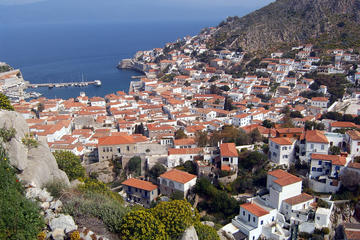

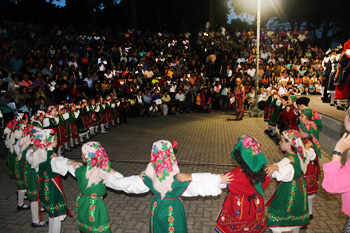
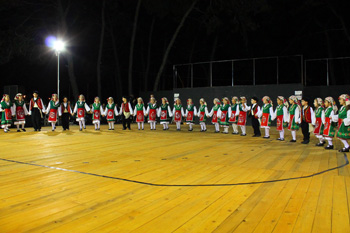 Folk dancing, or the traditional dances of the ordinary people, is something that can be seen all over Greece, and is a very significant part of local tradition. Each region has its own dances, although there are some dances that are common to all, such as the 12-step syrtos kalamatianos. Some of them may appear slow and staid, while others are faster, with intricate steps, and even jumps and very particular moves, such as touching the floor, bending the knee and swaying; there is a great deal of variety. If you travel to Crete and get the opportunity to watch the very impressive Pentozali dance, with its leaps and twirls, this is not to be missed.
Folk dancing, or the traditional dances of the ordinary people, is something that can be seen all over Greece, and is a very significant part of local tradition. Each region has its own dances, although there are some dances that are common to all, such as the 12-step syrtos kalamatianos. Some of them may appear slow and staid, while others are faster, with intricate steps, and even jumps and very particular moves, such as touching the floor, bending the knee and swaying; there is a great deal of variety. If you travel to Crete and get the opportunity to watch the very impressive Pentozali dance, with its leaps and twirls, this is not to be missed.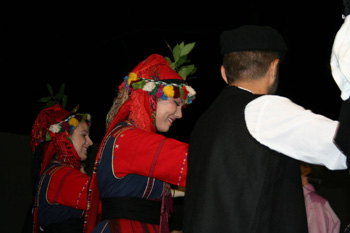 But we are going to concentrate here on the province of Evros. A place where each village is steeped in tradition, and the local costumes reflect that, with different colours, embroidery styles and other details revealing the locations.
But we are going to concentrate here on the province of Evros. A place where each village is steeped in tradition, and the local costumes reflect that, with different colours, embroidery styles and other details revealing the locations.
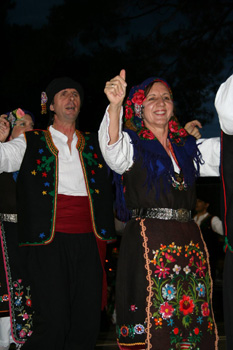 In Pentalofos, a village high up in the hills of northern Evros, close to the border with Bulgaria, I attended a dance at Easter. Local musicians, often playing traditional folk instruments such as the gaida, a local version of the bagpipes, come out into the central square of the village. The first year that I went, they were accompanied by a group of people wearing traditional costumes, but it seems that this is not always the case, as there were no costumes the following year. These people, whether dressed up or not, are dancers, and they begin the dance, to a great deal of applause and cheering from the crowds gathered there. After the first two dances, everyone else starts to join in. It is great fun, and the atmosphere is one of celebration and joy.
In Pentalofos, a village high up in the hills of northern Evros, close to the border with Bulgaria, I attended a dance at Easter. Local musicians, often playing traditional folk instruments such as the gaida, a local version of the bagpipes, come out into the central square of the village. The first year that I went, they were accompanied by a group of people wearing traditional costumes, but it seems that this is not always the case, as there were no costumes the following year. These people, whether dressed up or not, are dancers, and they begin the dance, to a great deal of applause and cheering from the crowds gathered there. After the first two dances, everyone else starts to join in. It is great fun, and the atmosphere is one of celebration and joy.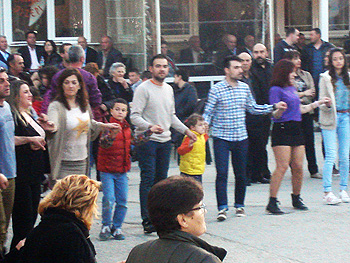 A major event in the folk dancing calendar is the festival that takes place in Alexandroupoli, the largest town in Evros, every summer, generally towards the end of June. A show is put on by local dancing clubs in the open-air theatre, which is close to the sea and surrounded by pine trees. In such a setting, the atmosphere is amazing. All the participants wear impressive traditional costumes, all different to reflect the places where their dances originated. Last year, over 250 dancers took part, including children as young as 5 years old. Live music fills the incredibly crowded theatre, with people sitting on the steps and standing all the way around the stage, tightly packed. Only those who come early will have a seat; the show is extremely popular.
A major event in the folk dancing calendar is the festival that takes place in Alexandroupoli, the largest town in Evros, every summer, generally towards the end of June. A show is put on by local dancing clubs in the open-air theatre, which is close to the sea and surrounded by pine trees. In such a setting, the atmosphere is amazing. All the participants wear impressive traditional costumes, all different to reflect the places where their dances originated. Last year, over 250 dancers took part, including children as young as 5 years old. Live music fills the incredibly crowded theatre, with people sitting on the steps and standing all the way around the stage, tightly packed. Only those who come early will have a seat; the show is extremely popular.

